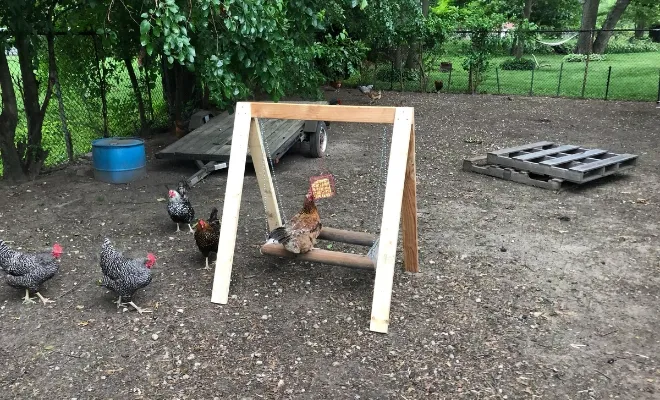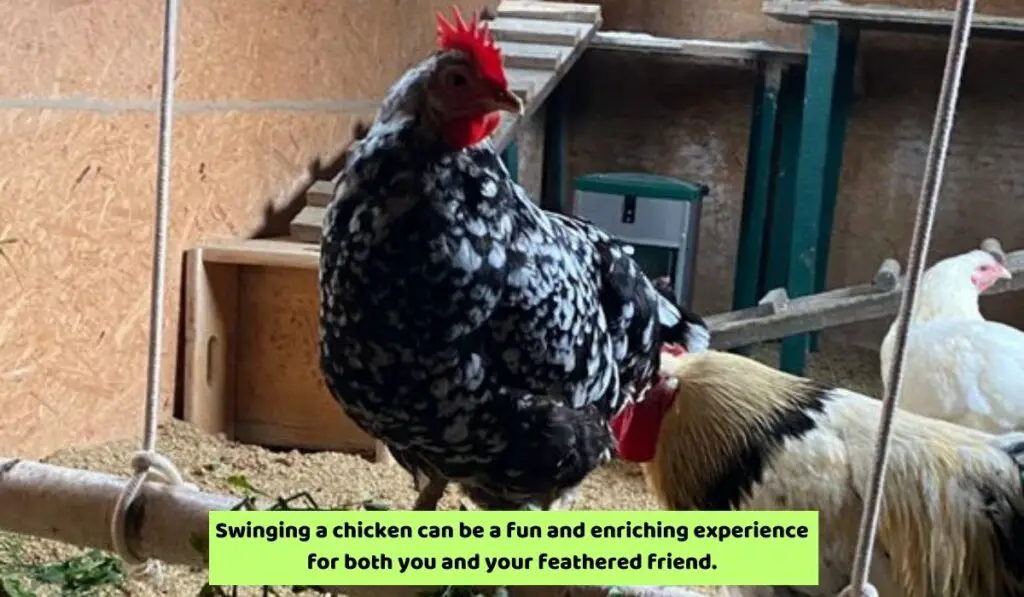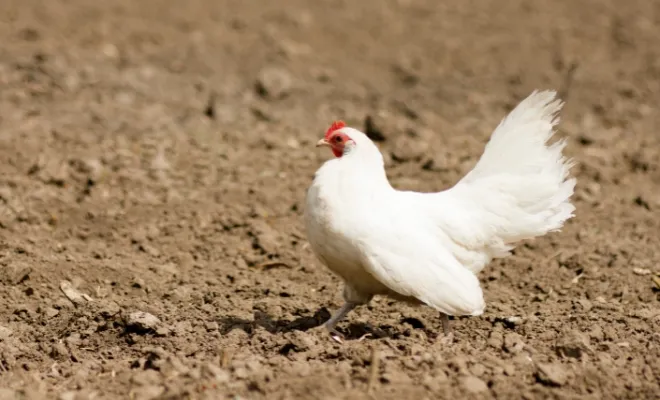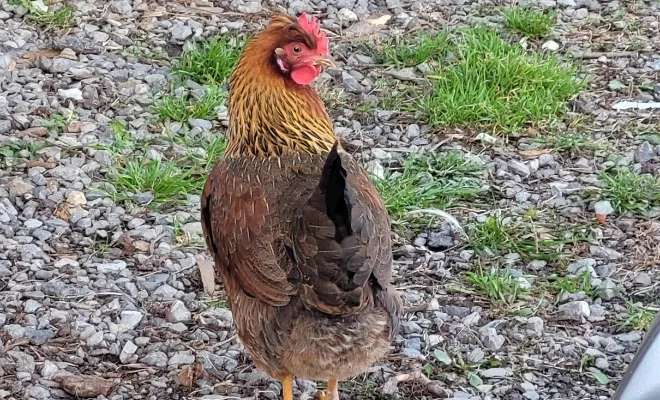Why You Should Build a Chicken Swing? To Prevent Stress!

As a backyard chicken owner, ever thought about giving your feathered pals a swinging good time? A chicken swing is a simple yet ingenious addition to your backyard coop. It’s designed to bring joy and health to your feathered friends.
So, why you should build a Chicken Swing? A chicken swing is like a fun gym that helps them exercise. It makes their muscles strong and prevents them from becoming fat. It also makes them less stressed and keeps them feeling happy and healthy. Plus, the swing is like a playground where chickens can hang out together and be friends.
Want to learn how to make a chicken swing or purchase one? Let’s check the article to get the guidelines!
Table of Contents
Why You Should Build a Chicken Swing? Know the 5 Reasons and Benefits!

Adding a swing to your chicken coop is like giving your feathered friends a fun upgrade. Here’s why they’ll love it.
- Beat Boredom: Chickens get bored easily. A swing keeps them active, climbing, and balancing – like a chicken playground!
- Stress-Soothing Swings: Environmental enrichment, like swings and perches, can reduce stress in chickens. The gentle back-and-forth motion of a swing is like a mini spa treatment.
- Back to Nature: Chickens come from tree-loving ancestors. Swings let them perch high, bringing a bit of the wild into their coop.
- Peaceful Playtime: Swings are like a neutral zone for chicken gatherings. It helps them establish who’s boss without fighting over food or nesting spots.
- Fun for Everyone: Watching chickens on a swing is pure entertainment. Their funny attempts to hop on and occasional tumbles will have you laughing alongside your feathery friends.
11 Types of Chicken Swings You Can Make
You can create various types of chicken swings to keep your feathered friends entertained. Here are a few ideas.
- Free Standing Chicken Swing
- Classic Perch Swing
- Tire Swing
- PVC Pipe Swing
- Log Swing
- Basket Swing
- Hanging Disc Swing
- Multi-Level Swings
- Ladder Swing
- Colorful Ribbon Swing
- Treat-Dispensing Swing
How to Build a Chicken Swing? 11 Ideas You Can Try!

Building a chicken swing is a simple and rewarding DIY project. To make a chicken swing, first, pick a base. I like using a big piece of wood. But you can also use a strong branch or a scrap of lumber. Make sure it’s between 18 to 24 inches wide.
Next, you’ll need a sturdy rope for hanging the swing. If you have baling twine from the farm, that works great. Otherwise, get a strong rope from a store.
Now, gather simple tools like a power drill. Plus, a big bit for making holes and a saw is crucial if you need to adjust the size of the base. Besides, some other things are important!
So, What do I need to make a Chicken Swing?
- Wooden dowel or sturdy branch
- Rope or chain (Four pieces of ¼-inch rope, about five feet each.)
- Drill with drill bits
- Screw eye hooks
- S-hooks or carabiners
- Sandpaper
- Non-toxic paint or sealant (optional)
Step-by-Step Guide to Making DIY Chicken Swing

Here are the steps you should follow when making a chicken swing inside the coop or in the open yard.
- Choose the Swing Material: Select a sturdy and non-toxic wooden dowel. A branch with a diameter of about 1 to 2 inches is important, too.
- Prepare the Perch: Cut the selected material to your desired length. It must be around 18 to 24 inches. People often prefer 3-foot wood length.
- Sand the Perch: Smooth any rough edges using sandpaper. It ensures a comfortable perch for your chickens.
- Drill Holes: Drill two holes near each end of the perch. Make sure they are large enough for the rope or chain to pass through.
- Paint or Seal (Optional): If desired, paint or seal the perch with a non-toxic substance. It’s to protect it from the elements.
- Attach Screw Eye Hooks: Screw eye hooks into the drilled holes on both ends of the perch.
- Measure and Cut the Rope or Chain: Cut two equal lengths of rope or chain. It’s to ensure they are long enough to hang the swing at your desired height.
- Thread the Rope or Chain: Thread one end of each rope or chain through the screw eye hooks. It secures them with knots or by looping through carabiners.
- Hang the Swing: Use the remaining ends of the rope or chain to hang the swing securely from a stable structure.
- Adjust and Test: Ensure the swing is level and at a height suitable for your chickens. Test the swing to make sure it is secure and balanced.
People often ask, “How high should a Chicken Swing be hung? Well, make sure the bottom of the swing is not more than three feet above the ground.
Jumping from higher spots can be tough on the chickens’ feet and legs. Doing it a lot, especially on hard or rough surfaces, can lead to a problem called bumblefoot, which is not good for your chickens.
If any confusion in mind, see the video –
Additional Steps for Making Specific Designs of Chicken Swing
While the basic concept of constructing a chicken swing remains similar across various designs, specific details may differ based on the type of swing. Here’s a general breakdown:
- Free Standing Chicken Swing: Requires a frame or A-frame to make it stand independently.
- Tire Swing: Involves adapting an old tire for use as the swing perch.
- PVC Pipe Swing: Uses PVC pipes to create a lightweight and durable swing.
- Log Swing: Utilizes a natural log or tree branch for a rustic feel.
- Basket Swing: Involves attaching a small basket or crate for a unique swinging experience.
- Hanging Disc Swing: Uses a flat, sturdy surface like a wooden disc for chickens to perch on.
- Multi-Level Swings: Involves creating a swing set with multiple perches at different heights.
- Ladder Swing: Requires hanging a small ladder horizontally for climbing and swinging.
- Colorful Ribbon Swing: Adds colorful ribbons to a simple perch for visual appeal.
- Treat-Dispensing Swing: Involves attaching a small platform with treats to make swinging more rewarding.
How to Make Chicken Swing by Considering Safety?

Adding a swing to your chicken coop is awesome, but safety is key. Here’s how to build a safe and fun swing for your chickens:
How to Choose Materials for Chicken Swing?
- Pick a strong beam or structure for support.
- Choose a sturdy platform like wood, a tire, or plastic.
- Use rope, chains, or thick nylon cords for hanging.
- Secure everything with screws, bolts, or heavy-duty zip ties.
How to Ensure Safety in Chicken Swing?
- Check connections to handle the chicken weight.
- Make sure there’s 18 inches of space above and below the swing.
- Smooth edges to prevent injuries.
- Add padding like straw for a soft landing.
- Consider multiple swings for a big flock.
- Regularly inspect for wear and tear.
Bonus Tips: You can hang the swing at a slight angle for fun. Decorate the platform or add toys for extra fun. And introduce one chicken at a time for a smooth start.
How Long Does It Take to Make a Chicken Swing?
The time it takes to make a chicken swing depends on your DIY skills and the complexity of the design. On average, a simple chicken swing can be crafted in approximately 1 to 2 hours.
This includes –
- Gathering materials
- Preparing the base
- Making necessary holes
- Tying knots
- Hanging the swing.
More intricate designs or additional features may extend the crafting time. It’s a fun and relatively quick project that can bring joy to both you and your feathered friends!
Related Readings:
- How To Raise Chickens With No Land
- How Long Do Baby Chicks Need A Heat Lamp
- 8 Steps To Build Chicken Playground!
How Do You Swing a Chicken? 10 Tips!

Swinging a chicken can be a fun and enriching experience for both you and your feathered friend. Here’s a detailed guide on how to do it safely:
1. Introduce the Swing
Allow your chicken to explore the swing without any pressure. Place treats on or near it to encourage curiosity.
2. Gain Chicken Trust
Spend time near your chicken, gently talking to them and offering treats. This helps build trust before attempting to place them on the swing.
3. Handle Calm Chickens
Choose a time when your chicken is calm, such as when they are in a relaxed state or after they’ve eaten.
4. Lift Gently

Approach the chicken slowly and lift them with both hands, supporting their body. Ensure a calm and gentle approach to prevent stress.
5. Place on the Swing
Position the chicken onto the swing perch, allowing them to grip it with their feet. Ensure the swing is stable and doesn’t sway excessively.
6. Start with Short Sessions
Begin with brief swinging sessions to let the chicken acclimate. Gradually increase the duration as they become more comfortable.
7. Use Treats and Encouragement
Reward your chicken with treats and praise during and after swinging sessions. It’s to associate the experience with positive reinforcement.
8. Monitor Body Language
Pay attention to your chicken’s body language. If they appear stressed or uneasy, gently lift them off the swing and try again later.
9. Gradual Increase in Movement
As your chicken becomes accustomed to the swing, gently introduce a subtle back-and-forth motion. Observe their response and adjust accordingly.
10. Provide a Safe Landing
Ensure the area around the swing is clear and provides a soft landing surface. It prevents injuries if the chicken decides to jump off.
10 Additional Enrichment Ideas For Chicken

Adding a chicken swing to your coop is a fantastic start, but why stop there? Elevate your feathered friends’ enrichment with these additional ideas:
1. Foraging Fun
Scatter grains, seeds, or kitchen scraps in the coop. This encourages natural foraging behavior, keeping your chickens engaged and satisfied.
2. Vegetable Piñatas
Hang leafy greens or vegetables like cabbage from the ceiling. Chickens can peck at them, providing both mental stimulation and a nutritious treat.
3. Dust Bath Delight
Create a designated dust bathing area with fine sand and diatomaceous earth. Chickens love dust baths, and it helps keep their feathers clean.
4. Egg-cellent Hunt
Conceal treats or even their own eggs around the coop. This turns egg-laying into an exciting scavenger hunt, promoting mental stimulation.
5. Mirrors and Reflective Surfaces
Install small mirrors or reflective surfaces. Chickens are naturally curious and enjoy checking themselves out, making this a simple yet effective enrichment.
6. Tunnel Time
Place PVC pipes or small tunnels in the coop. Chickens can explore, roost, or even use them as hiding spots, adding variety to their environment.
7. Herb Garden Heaven

Plant chicken-friendly herbs like parsley, basil, or oregano. Chickens can peck at the herbs, promoting natural behaviors and providing a tasty treat.
8. Musical Treat Dispenser
Hang a small container filled with treats that makes a noise when pecked. This combines mental stimulation with a tasty reward.
9. Shade and Seating
Provide shaded areas and comfortable seating options. Chickens enjoy relaxing, and a cozy corner with soft bedding or a low perch can be a perfect retreat.
10. Gourd or Pumpkin Play
Hang gourds or pumpkins for chickens to peck at. Not only does this add a playful element, but it also provides nutritional benefits.
Related Readings:
- Build the Perfect Duck House In Your Pond
- How To Create A Dust Bath For Your Chickens
- Care For Dehydrated Chickens
FAQs
Check out these related queries on making a chicken swing.
Q. Do chickens like swings?
Yes, many chickens enjoy swings. Swings provide entertainment, exercise, and mental stimulation.
Q. Will chickens sit on a swing?
Yes, with proper introduction and encouragement, chickens will often sit. They even swing on a chicken swing.
Q. Can I buy a chicken swing instead of building one?
Yes, you can purchase pre-made chicken swings from pet supply stores or online. It helps you to put much effort into building one yourself.
Final Word
So, why you should build a Chicken Swing? Making a chicken swing is easy and brings big benefits for you and your chickens. It’s not just fun; the swing gives them exercise, stress relief, and a chance to socialize.
Whether you make it yourself or buy one, a chicken swing is a great idea. It’s a joyful investment that can lift your coop and add liveliness to chickens. So, why not give it a try and let your chickens enjoy the swing life? Just go for it!






